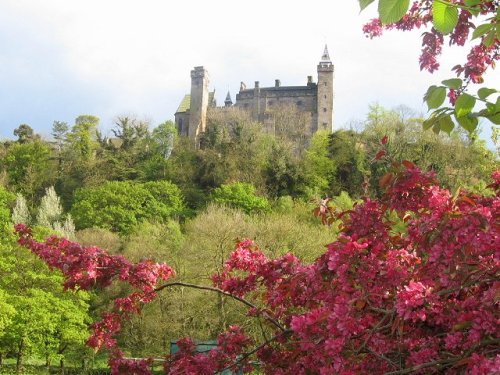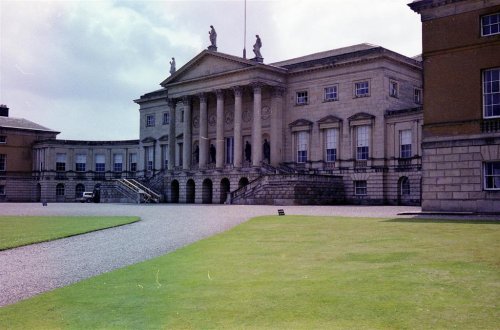Pictures of Sudbury
About Sudbury
The village of Sudbury lies in a landscape of contrasts where old Royal hunting grounds meet with the industrial heritage of 19th-century England. This is an ancient place, a church was recorded here in the Doomsday Book of 1086.
Looking around you can see at once that this was always intended to be a small, neat village. There are rows of cosy red-brick cottages, dignified gabled houses and a 17th-century coaching inn crammed into the main street. The inn, The Vernon Arms, takes its name from the family who built it - the Vernon's. George Vernon built Sudbury Hall in 1660, it was their home until it passed to the National Trust in 1967.
Not a great deal of change has come to Sudbury, for a while it suffered from the consequences of 20th-century traffic but blessedly relief was brought by the building of a by-pass which once again restored harmony in place of chaos.
Although there is lots to see in Sudbury, it is the sheer magnificence of the Hall that draws the crowd. The building is in late-Jacobean style, with bays and a heavily canopied porch. The red-brick facade is diamond patterned in deep russet brick, and the windows are mullioned. The interior is richly decorated by Grindling Gibbons and Edward Pierce, and amongst its treasures there are paintings by Laguerre. There are charming grounds, a lake, and the Museum of Childhood is located at the Hall.
Standing next to Sudbury Hall, surrounded by avenues of lush yew trees, you will find All Saints Church. A place of worship since the 12th-century, the church under went a great deal of restoration in the 19th-century, and it is thought likely that this church replaced the earlier church mentioned in the Doomsday Book. In the quiet churchyard there are the gravestones and tombs of centuries. There remains good signs of original Norman work but the attractive balustrade parapet was added at about the same time as the building of Sudbury Hall. Of the churches treasures, its beautiful font (C.1300) was 'lost' during the restoration period and replaced with a 'good' Victorian one! Other treasures remain, chief amongst them is the magnificent window presented to the church by Queen Victoria and Prince Albert in 1850. The window is in memory of George Edward Anson, private secretary to the Prince, and keeper of Queen Victoria's privy purse. Interestingly, the window is the work of a German artist. This is a lovely church and should you chance to be in Sudbury, it is one you should not miss.
The River Dove skirts Sudburyas it flows through some of Derbyshire's most beautiful countryside, watering tranquil meadows where wild flowers flourish and contented cattle graze. Along the river you can sometimes see kestrels, grey herons, newts, frogs, toads, woodpeckers are not unusual, and there can be the occasional sighting of a tawny owl.
With all of this, plus the charms of enchanting villages like historic Sudbury, it is not surprising to find that Derbyshire is one of the fastest growing tourist destinations in this part of England. It has lovely towns with excellent hotels, good shopping including specialist shops and galleries, historic inns and within easy driving distance delightful restaurants and olde-worlde tea rooms. There are many exciting things to do in the area, Sudbury is within easy driving distance of the Peak District National Park.
Places to visit include: Alton Towers, Shugborough Hall, Abbots Bromley for Puppet Museum, Heritage Brewery Museum at Burton-upon-Trent, Blithfield Reservoir and Cannock Chase.






